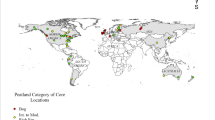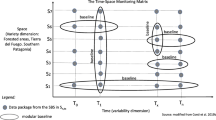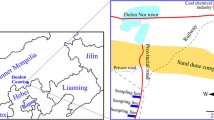Abstract
Peatlands dominate the landscape of the Hudson Bay Lowlands in Ontario, Canada. Recently, mineral deposits of chromium (Cr), nickel (Ni), and copper (Cu) were discovered in the region and anticipated future industrial mining operations have the potential to impact the environment. Lichens and bryophytes are considered excellent biomonitors and indicators of deposition, deriving their nutrients directly from the atmosphere. Trace element concentrations in lichens and bryophytes have not been reported in the Hudson Bay Lowlands. Here, we seek to determine the baseline trace element concentrations of six non-vascular species (Evernia mesomorpha, Bryoria spp., Cladonia stellaris, Cladonia stygia, Sphagnum fuscum, and Sphagnum capillifolium) common to the region, explore linear relationships of trace elements with iron (Fe) as a signature of particulates with geogenic origin, and calculate trace element enrichment factors. Thalli, foliage, and peat (0–30 cm) were collected from 55 locations between 2013 and 2018 and analyzed for trace elements. Thalli and foliar concentrations are among the lowest reported in the broader literature and differ substantially from peat. Fe concentrations were significantly correlated (Pearson’s r ≥ 0.8) with aluminum (Al), titanium (Ti), and vanadium (V) in all six species. Enrichment factors show some anthropogenic deposition effects non-vascular organism chemistry. Most trace element concentrations in lichens and bryophytes are indicative of long-range atmospheric transport of dust, but some is attributed to industry, with only minimal inclusions from the local area. Epiphytic lichens are well suited for ongoing atmospheric biomonitoring as industrialization commences.


Similar content being viewed by others
Availability of data and materials
All data for this work will be made available upon reasonable request.
References
Adamo, P., Crisafulli, P., Giordano, S., Minganti, V., Modenesi, P., Monaci, F., Pittao, E., Tretiach, M., & Bargagli, R. (2007). Lichen and moss bags as monitoring devices in urban areas. Part II: trace element content in living and dead biomonitors and comparison with synthetic materials. Environmental Pollution, 146, 392–399.
Adamo, P., Giordano, S., Vingiani, S., Cobianchi, R. C., & Violante, P. (2003). Trace element accumulation by moss and lichen exposed in bags in the city of Naples (Italy). Environmental Pollution, 122, 91–103.
Adshead, J. D. (1983). Hudson Bay river sediments and regional glaciation: I. Iron and carbonate dispersal trans southwest of Hudson and James Bay. Canadian Journal of Earth Science, 20, 290–304.
Arafat, N. M., & Glooschenko, W. A. (1982). The use of bog vegetation as an indicator of atmospheric deposition of arsenic in northern Ontario. Environmental Pollution, 4, 85–90.
Avila, A., & Rodrigo, A. (2004). Trace metal fluxes in bulk deposition, throughfall and stemflow at two evergreen oak stands in NE Spain subject to different exposures to the industrial environment. Atmospheric Environment, 38, 171–180.
Avila-Perez, P., Ortiz-Oliveros, H. B., Zarazua-Ortega, G., Tejeda-Vega, S., Villalva, A., & Sanchez-Munoz, R. (2019). Determining of risk areas due to exposure of heavy metals in the Toluca Valley using epiphytic mosses as a biomonitor. Journal of Environmental Management, 241, 138–148.
Bargagli, R., Monaci, F., Borghini, F., Bravi, F., & Agnorelli, C. (2002). Mosses and lichens as biomonitors of trace metals. A comparison study on Hypnum cupressiforme and Parmelia in a former mining district in Italy. Environmental Pollution, 116, 279–287.
Bennett, J. P. (1995). Abnormal chemical element concentrations in lichens of Isle Royale National Park. Environmental and Experimental Botany, 35, 259–277.
Brodo, I. M., Duran, S., & Sharnoff, S. (2001). Lichens of North America. Yale University press. 795.
Brown, D. H. (1991). Lichen mineral studies – currently clarified or confused? Symbiosis, 11, 207–223.
Burr, C. (2015). The quantification of metals in vegetation dry ash and hot block digestion and inductively coupled plasma-optical emissions spectrometry (ICP-OES). Ministry of the Environment and Climate Change Laboratory Services Branch, E3479.
Chong, J. (2014). Resource development in Canada: a case study on the ring of fire. Library of Parliament. Publication no. 2014–17-E.
Cook, J. M., Gardner, M. J., Griffiths, A. H., Jessep, M. A., Ravenscroft, J. E., & Yates, R. (1997). The comparability of sample digestion techniques for the determination of metals in sediments. Marie Pollution Bulletin, 34, 637–644.
Demirbas, A. (2004). Trace element concentrations in ashes from various types of lichen biomass species. Energy Sources, 26, 499–506.
Ellis, J., & Schneider, D. (1996). Evaluation of a gradient sampling design for environmental impact assessment. Environmental Monitoring and Assessment, 48, 157–172.
Environment and Climate Change Canada. (2021). Government of Canada station results – historical data Neskantaga first nation weather station (Lansdowne house). Accessed 2021 https://climate.weather.gc.ca/historical_data/search_historic_data_stations_e.html?searchType=stnName&timeframe=1&txtStationName=Lansdowne+house&searchMethod=contains&optLimit=yearRange&StartYear=1840&EndYear=2021&Year=2021&Month=5&Day=17&selRowPerPage=25
Fay, E., & Lavoie, C. (2009). The impact of birch seedlings on evapotranspiration from a mined peatland: An experimental study in southern Quebec, Canada. Mires and Peat, 5, 1–7.
Gao, N., Hopke, P. K., & Reid, N. W. (1996). Possible sources of some trace elements found in airborne particles and precipitation in Dorset, Ontario. Air & Waste Management Association, 46, 1035–1047.
Garrah, K. L. (2013). Upland ecosystems in the Hudson Bay Lowlands provide reference conditions for the reclamation of mine waste stockpiles. Masters Thesis School of Graduate Studies Laurentian University Sudbury Ontario.
Geiser, L. H., & Neitlich, P. N. (2007). Air pollution and climate gradients in western Oregon and Washington indicated by epiphytic macrolichens. Environmental Pollution, 145, 203–218.
Gstoettner, E. M., & Fisher, N. S. (1997). Accumulation of cadmium, chromium, and zinc by the moss Sphagnum papillosum Lindle. Water, Air, and Soil Pollution, 93, 321–330.
Hajek, T., & Adamec. (2009). Mineral nutrient economy in competing species of Sphagnum mosses. Ecological Research, 24, 291–302.
Handa, I. T., Harmsen, R., & Jefferies, R. L. (2002). Patterns of vegetation change and the recovery potential of degraded areas in a costal marsh system of the Hudson Bay lowlands. Journal of Ecology, 90, 86–99.
Hattori, K. H., & Hamilton, S. (2008). Geochemistry of peat over kimberlites in the Attawapiskat area, James Bay Lowlands, Northern Canada. Applied Geochemistry, 23, 3767–3782.
Hattori, K. H., Hamilton, S., Kon, J., & Gravel, J. (2016). Soil geochemical survey over concealed kimberlites in the Attawapiskat area in northern Canada. Geochemistry: Exploration. Environmental Analysis, 9, 139–150.
Kryukova, A. (2016). Determination of the trace metals in vegetation using microwave digestion and inductively coupled plasma mass spectrometry (ICP – MS). Laboratory Services Branch, Ontario Ministry of the Environment, Conservation and Parks. VEG-E3521.
Laxton, D. L., Watmough, S. A., Aherne, J., & Straker, J. (2010). An assessment of nitrogen saturation in Pinus banksiana plots in the Athabasca oil sands region, Alberta. Journal of Limnology, 69, 171–180.
Loppi, S., & Bonini, I. (2000). Lichens and mosses as biomonitors of trace elements in areas with thermal springs and fumarole activity (Mt. Amiata central Italy). Chemosphere, 41, 1333–1336.
Mahowald, N. M., Engelstaedter, S., Luo, C., Sealy, A., Artaxo, P., Benitez-Nelson, C., Bonnet, S., Chen, Y., Chuang, P. Y., Cohen, D. D., Dulac, F., Herut, B., Johansen, A. M., Kubilay, N., Losno, R., Maenhaut, W., Paytan, A., Prospero, J. M., Shank, L. M., & Siefert, R. (2009). Atmospheric iron deposition: Global distributions, variability and human perturbations. Annual Review of Marine Science, 1, 245–278.
McDonough, A. M. & Todd, A. K. (2020). Establishment of peatland plots in the ring of fire region of the Hudson Bay Lowlands to monitor ecosystem changes from anticipated mining activity. Ontario Ministry of the Environment, Conservation and Parks, 1–25.
Meadows, M., & Watmough, S. A. (2012). An assessment of long-term risks of metals in sudbury: a critical loads approach. Water, Air, and Soil Pollution, 221, 4343–4354.
Moore, T. R., Bubier, J. L., Frolking, S. E., Lafleur, P. M., & Roulet, N. (2002). Plant biomass and production and CO2 exchange in an ombrotrophic bog. Journal of Ecology, 90, 25–36.
Mungall, J. E., Harvey, J. D., Balch, S. J., Azar, B., Atkinson, J. & Hamilton, M. A. (2010). Eagle’s nest: A Magmatic Ni-Sulfide Deposit in the James Bay Lowlands, Ontario, Canada, in Goldfarb, R.J., Marsh, E.E., & Monecke, T., The Challenge of Finding New Mineral Resources: Global Metellogeny, Innovative Exploration, and New Discoveries (pp. 539 -557). Society of Economic Geologitsts.
Myllys, L., Lindgren, H., Aikio, S., Hakkinen, L., & Hognabba,. (2016). Chemical diversity and ecology of the genus Bryoria section Implexae (Parmeliaceae) in Finland. The Bryologist, 119, 29–38.
Navratil, T., Shanley, J. B., Skrivan, P., Kram, P., Mihaljevic, M. & Drahota, P. (2007). Manganese biogeochemistry in a central Czech Republic catchment. Water, Air and, Soil Pollution. 186, 149-165.
Neary, A. J., & Barnes, S. R. (1993). The effect of sample grinding on extractable iron and aluminum in soils. Canadian Journal of Soil Science, 73, 73–80.
Nieboer, E., Richardson, D. H. S., & Tomassini, F. D. (1978). Mineral uptake and release by lichens: an overview. The Bryologist, 81, 226–246.
Nimis, P. L., Scheidegger, C. & Wolseley, P. A. (2002). Monitoring with lichens – monitoring lichens. Earth and Environmental Sciences, 7.
Osyczka, P., Rola, K., & Jankowska, K. (2016). Vertical concentration gradients of heavy metals in Cladonia lichens across different parts of thalli. Ecological Indicators, 61, 766–776.
Packalen, M., Finkelstein, S. A., & McLaughlin, J. W. (2014). Carbon storage and potential methane production in the Hudson Bay Lowlands since mid-Holocene peat initiation. Nature Communications. https://doi.org/10.1038/ncomms5078
Pakarinen, P. & Gorham, E. (1983). Mineral element composition of Sphagnum fuscum peats collected from Minnesota, Manitoba and Ontario. Symposium of Peat Utilization. Accessed 2019. https://conservancy.umn.edu/bitstream/handle/11299/147962/Peat%20utilization.pdf?sequence=1&isAllowed=y
Pakarinen, P., & Tolonen, K. (1976). Regional survey of heavy metals in peat mosses (Sphagnum). Ambio, 5, 38–40.
Paoli, L., Fiorini, E., Munzi, S., Sorbo, A., & Loppi, S. (2013). Antimony toxicity in the lichen Xanthoria parietina (L.) Th. Fr. Chemosphere, 93, 2269–2275.
Park, H. & Schlesinger, W. H. (2002). Global biogeochemical cycle of boron. Global Biogeochemical Cycles, 16. https://doi.org/10.1029/2001GB001766
Percy, K. E., & Borland, S. A. (1984). A multivariate analysis of element concentrations in Sphagnum magellanicum bird. in the maritime provinces, Canada. Water, Air, and Soil Pollution, 25, 331–338.
Peterson, S. L., Rockwell, R. F., Witte, C. R., & Koons, D. N. (2013). The legacy of destructive snow goose foraging on supratidal marsh habitat in the Hudson Bay Lowlands. Arctic, Antarctic, and Alpine Research, 45, 575–583.
Puckett, K. J., & Finegan, E. J. (1980). An analysis of the element content of lichens from the Northwest Territories, Canada. Canadian Journal of Botany, 58, 2073–2089.
RCore Team. (2020). R: a language and environment for statistical computing. R Foundation for Statistical Computing, Vienna, Austria. Accessed 2020. https://www.r-project.org/
Rainsford, D. R. B., Diorio, P. A., Hogg, R. L. S., & Metsaranta, R. T. (2017). The use of geophysics in the ring of fire, James Bay Lowlands – the chromite story. Proceedings of Exploration, 17, 649–662.
Reimann, C., & De Caritat, P. (2000). Intrinsic flaws of elemental enrichment factors (EFs) in environmental geochemistry. Environmental Science and Technology, 34, 5084–5091.
Rodushkin, I., Engstrom, E., Sorlin, D., Ponter, C., & Baxter, D. C. (2007). Osmium in environmental samples from Northeast Sweden. Part II. Identification of anthropogenic sources. Science of the Total Environment, 386, 159–168.
Ruhland, K. M., Paterson, A. M., Keller, W., Michelutti, N., & Smol, J. P. (2013). Global warming triggers the loss of a key Arctic refugium. Proceedings of the Royal Society, 280, 20131887.
Schleicher, N. J., Dong, S., Packman, H., Little, S. H., Gonzalez, R. O., Najorka, J., Sun, Y., & Weiss, D. J. (2020). A global assessment of copper, zinc, and lead isotopes in mineral dust sources and aerosols. Frontiers in Earth Science, 167, 1–20.
Sjors, H. (1959). Bogs and fens in the Hudson Bay Lowlands. Royal School of Forestry, Stockholm 51, Sweden.
Sofowote, U., & Dempsey, F. (2015). Impacts of forest fires on ambient near-real-time PM2.5 in Ontario, Canada: meteorological analyses and source apportionment of the July 2011–2013 episodes. Atmospheric Pollution Research, 6, 1–10.
Su, Y., Sofowote, U., Munzo, A., Noble, M., Charron, C., Todd, A., Celo, V., Dabek-Zlotorzynska, E., Kryukova, A., & Switzer, T. (2021). Baseline air monitoring of fine particulate matter and trace elements in Ontario’s Far North, Canada. Applied Sciences, 11, 6140.
Taylor, S. R., & McLennan, S. M. (1995). The geochemical evolution of the continental crust. Reviews of Geophysics, 33, 241–265.
Takala, K., Olkkonen, H., & Salminen, R. (1994). Iron content and its relations to the sulphur and titanium contents of epiphytic and terricolous lichens and pine bark in Finland. Environmental Pollution, 84, 131–138.
Tian, H., Zhou, J., Zhu, C., Zhao, D., Gao, J., Hao, J., He, M., Liu, K., Wang, K., & Hua, S. (2014). A comprehensive global inventory of atmospheric antimony emissions from anthropogenic activities, 1995–2010. Environmental Science and Technology, 48, 10235–10241.
Ulanowski, T. A., Branfireun, B., & A. (2013). Small-scale variability in peatland pore-water biogeochemistry, Hudson Bay Lowland, Canada. Science of the Total Environment, 454–455, 211–218.
Valeeva, E. I., & Moskovchenko, D. V. (2002). Trace-element composition of lichens as an indicator of atmospheric pollution in northern west Siberia. Polar Geography, 26, 374–394.
Waddington, J. M., Morris, P. J., Kettredge, N., Granath, G., Thompson, D. K., & Moore, P. A. (2015). Hydrological feedbacks in northern peatlands. Ecohydrology, 8, 113–127.
Warren, M. J., Lin, X., Gaby, J. C., Kretz, C. B., Kolton, M., Morton, P. L., Pett-Ridge, J., Weston, D. J., Schadt, C. W., Kostka, J. E., & Glass, J. B. (2017). Molybdenum-based diazotrophy in a Sphagnum peatland in northern Minnesota. Applied and Environmental Microbiology, 83, e01174-e1217.
Watmough, S. A., Bird, A., McDonough, A., & Grimm, E. (2019). Forest fertilization associated with oil sands emissions. Ecosystems, 22, 1–14.
Watmough, S. A., Eimers, M. C., & Dillon, P. J. (2007). Manganese cycling in central Ontario forests: response to soil acidification. Applied Geochemistry, 22, 1241–1247.
Walther, D. A., Ramelov, G. J., Beck, J. N., Young, J. C., Callahan, J. D., & Marcon, M. F. (1990). Temporal changes in metal levels of the lichen Parmotrema praesorediosum and Ramalina stenospora, southwest Louisiana. Water, Air, and Soil Pollution, 53, 189–200.
Wein, R. W., & Speer, J. E. (1975). Lichen biomass in acadian and boreal forests of cape Breton island, Nova Scotia. The Bryologist, 78, 328–333.
Wiklund, J. A., Kirk, J. L., Muir, D. C. G., Gleason, A., Carrier, J., & Yang, F. (2020). Atmospheric trace metal deposition to remote northwest Ontario, Canada: anthropogenic fluxes and inventories from 1860 to 2010. Science of the Total Environment, 749, 142276.
Will-Wolf, S., Jovan, S., & Amacher, M. C. (2017). Lichen elemental content bioindicators of air quality in upper Midwest, USA: A model for large scale monitoring. Ecological Indicators, 78, 253–263.
Wu, L., Isley, F. C., Handley, H. K., & Taylor, M. P. (2021). Atmospheric sources of anthropogenic and geogenic trace element in Australian lichen and fungi. Anthropocene, 33, 100279.
Acknowledgements
The authors would like to thank Lindsay Freeman, Troy McMullin, Jenifer Doubt, Michele Williamson, Murray Dixon, Chris Charron, Katherine Carey, Zachary Ramwa, and Laboratory Services Branch of the Ontario Ministry of the Environment, Conservation and Parks and the Ontario Ministry of Natural Resources and Forestry.
Author information
Authors and Affiliations
Contributions
Andrew McDonough conducted the field and lab work and wrote much of the paper. All the other authors conducted field and lab work and contributed to writing the paper.
Corresponding author
Ethics declarations
Ethics approval
Not applicable.
Consent to participate
Not applicable.
Consent for publication
We consent.
Conflict of interest
The authors declare no competing interests.
Additional information
Publisher's Note
Springer Nature remains neutral with regard to jurisdictional claims in published maps and institutional affiliations.
Supplementary Information
Below is the link to the electronic supplementary material.
Rights and permissions
About this article
Cite this article
McDonough, A.M., Bird, A.W., Luciani, M.A. et al. Establishing trace element concentrations for lichens and bryophytes in the ring of fire region of the Hudson Bay Lowlands, Ontario, Canada. Environ Monit Assess 194, 226 (2022). https://doi.org/10.1007/s10661-022-09890-0
Received:
Accepted:
Published:
DOI: https://doi.org/10.1007/s10661-022-09890-0




